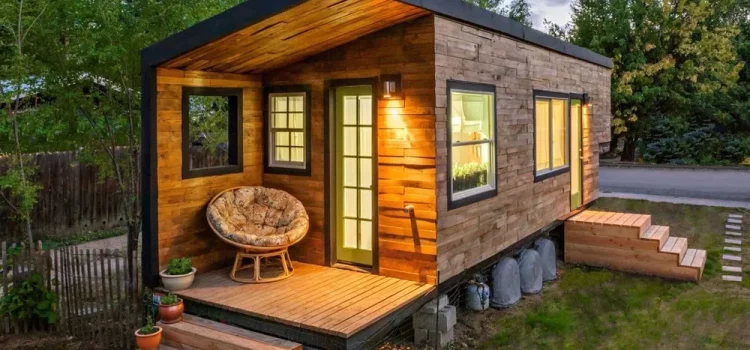
Introduction
Off-grid living is a transformative way of life that allows individuals to disconnect from traditional utilities and embrace self-sufficiency. Whether you’re drawn to reducing your carbon footprint, gaining independence, or seeking a deeper connection with nature, building and living in an off-grid home offers a unique set of challenges and rewards. In this comprehensive guide, we’ll take you through the essential aspects of off-grid living and help you embark on a journey towards sustainable and self-sufficient living.

Embracing Self-Sufficiency with Off-Grid Living
Off-grid homes are designed to function independently of mainstream utilities like electricity, water, and sewage systems. This guide explores the various aspects of creating an off-grid home, from location selection to sustainable living practices.
Choosing the Right Location for Your Off-Grid Home
Selecting the ideal location is critical for off-grid living. Factors such as climate, access to resources, and local regulations play a significant role in determining the feasibility of your off-grid home. Research and planning are key to finding the perfect spot.
Building Off-Grid: Design and Construction Essentials
Designing an off-grid home requires careful consideration of energy efficiency, insulation, and materials. Building techniques that maximize natural heating, cooling, and lighting can contribute to the overall sustainability of your home.
Powering Your Off-Grid Home: Renewable Energy Options
Generating your own power is a cornerstone of off-grid living. Solar panels, wind turbines, and hydroelectric systems are popular renewable energy sources for off-grid homes. We’ll explore the benefits and challenges of each option.
Water and Waste Management Solutions for Off-Grid Living
Off-grid living necessitates innovative approaches to water supply and waste management. Rainwater harvesting, well drilling, composting toilets, and greywater systems are essential components of a self-sufficient lifestyle.
Sustainable Living Practices and Resources
Living off the grid goes beyond infrastructure; it’s a mindset. Embrace sustainable living practices, including permaculture, gardening, and food preservation. Learn about resources that can help you acquire the skills needed for a self-reliant life.
Challenges and Considerations of Off-Grid Homes
Off-grid living presents unique challenges, such as potential isolation, regulatory hurdles, and the need for ongoing maintenance of systems. Understanding and planning for these challenges is crucial for a successful off-grid experience.
Creating a Balanced Off-Grid Lifestyle
Ultimately, off-grid living is about balance. It’s about harnessing the benefits of technology while minimizing environmental impact. It’s about connecting with nature while maintaining a comfortable and fulfilling lifestyle.
Conclusion
The journey to off-grid living is an exciting and transformative endeavor. By following this guide and embracing the principles of sustainability, self-sufficiency, and mindful living, you can create an off-grid home that not only meets your needs but also contributes positively to the environment and your overall well-being.










